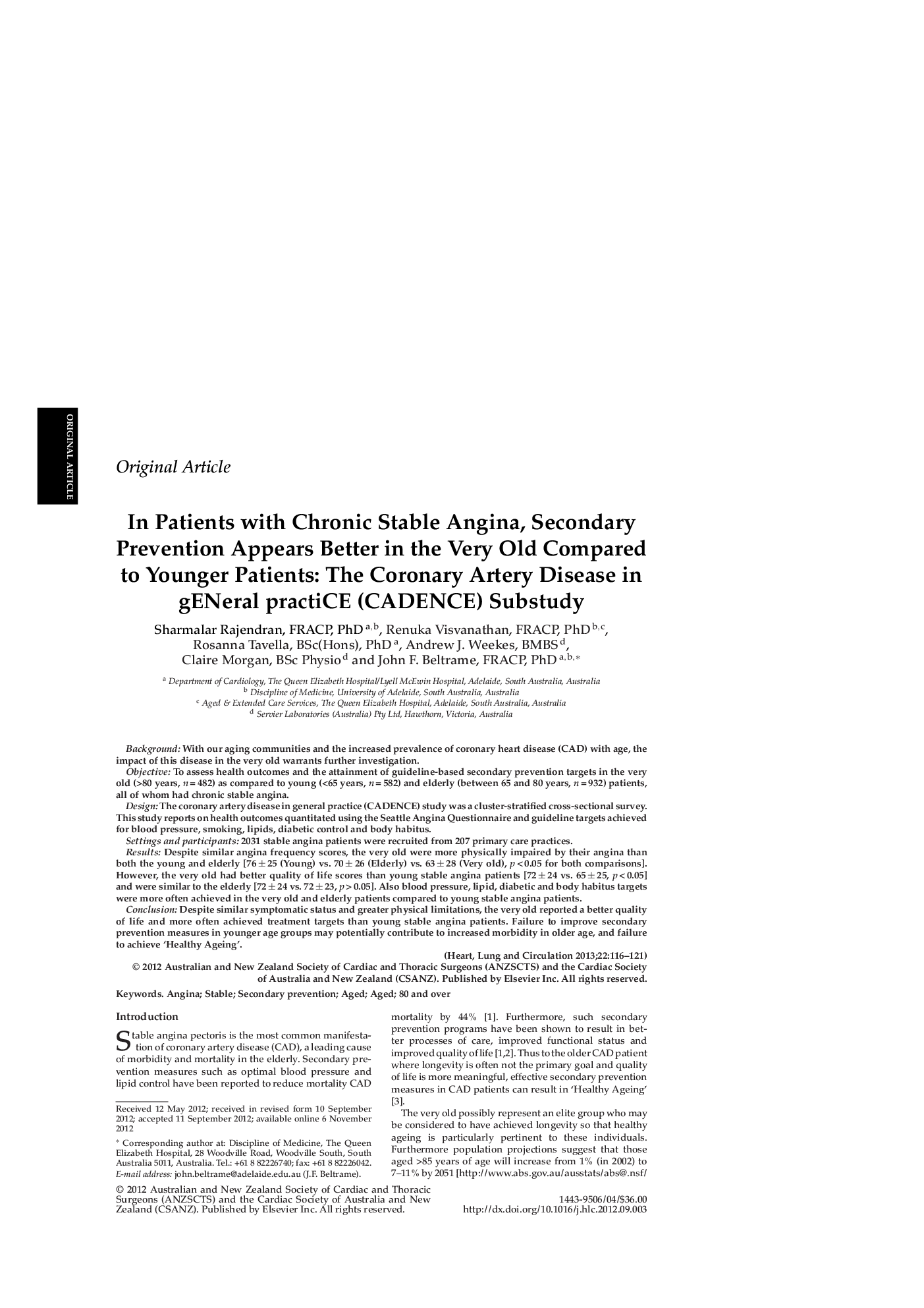| کد مقاله | کد نشریه | سال انتشار | مقاله انگلیسی | نسخه تمام متن |
|---|---|---|---|---|
| 2919203 | 1175707 | 2013 | 6 صفحه PDF | دانلود رایگان |

BackgroundWith our aging communities and the increased prevalence of coronary heart disease (CAD) with age, the impact of this disease in the very old warrants further investigation.ObjectiveTo assess health outcomes and the attainment of guideline-based secondary prevention targets in the very old (>80 years, n = 482) as compared to young (<65 years, n = 582) and elderly (between 65 and 80 years, n = 932) patients, all of whom had chronic stable angina.DesignThe coronary artery disease in general practice (CADENCE) study was a cluster-stratified cross-sectional survey. This study reports on health outcomes quantitated using the Seattle Angina Questionnaire and guideline targets achieved for blood pressure, smoking, lipids, diabetic control and body habitus.Settings and participants2031 stable angina patients were recruited from 207 primary care practices.ResultsDespite similar angina frequency scores, the very old were more physically impaired by their angina than both the young and elderly [76 ± 25 (Young) vs. 70 ± 26 (Elderly) vs. 63 ± 28 (Very old), p < 0.05 for both comparisons]. However, the very old had better quality of life scores than young stable angina patients [72 ± 24 vs. 65 ± 25, p < 0.05] and were similar to the elderly [72 ± 24 vs. 72 ± 23, p > 0.05]. Also blood pressure, lipid, diabetic and body habitus targets were more often achieved in the very old and elderly patients compared to young stable angina patients.ConclusionDespite similar symptomatic status and greater physical limitations, the very old reported a better quality of life and more often achieved treatment targets than young stable angina patients. Failure to improve secondary prevention measures in younger age groups may potentially contribute to increased morbidity in older age, and failure to achieve ‘Healthy Ageing’.
Journal: Heart, Lung and Circulation - Volume 22, Issue 2, February 2013, Pages 116–121